
Sir William Wilson Hunter was a Scottish historian, statistician, a compiler and a member of the Indian Civil Service.
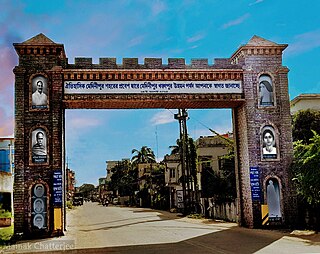
Medinipur or Midnapore is a city known for its history in the Indian state of West Bengal. It is the headquarters of the West Medinipur district. It is situated on the banks of the Kangsabati River. The Urban Agglomeration of Midnapore consists of the city proper, Mohanpur, Keranichati and Khayerullachak. Midnapore and it's neighbouring city of Kharagpur constitute the central core of the Midnapore Kharagpur Development Authority metro area, spread across 576 square kilometres.

Bulandshahr, formerly Baran, is a city and a municipal board in Bulandshahr district in the state of Uttar Pradesh, India.

Singhbhum was a district of India during the British Raj, part of the Chota Nagpur Division of the Bengal Presidency. It was located in the present-day Indian state of Jharkhand. Chaibasa was the district headquarters. Located in the southern limit of the Chota Nagpur Plateau, Singhbhum included the Kolhan estate located in its southeastern part. The district has been divided into three smaller districts, being East Singhbhum, West Singhbhum and Saraikela Kharsawan all are present in Jharkhand state of India. This district of Jharkhand is one of the leading producer of copper in India.
Jhargram is a planned city and a municipality in the Indian state of West Bengal. It is the headquarters of the Jhargram district. It is a popular tourist destination known for its forests, ancient temples and royal palaces.

Paschim Medinipur district is one of the districts of the state of West Bengal, India. It was formed on 1 January 2002 after the Partition of Midnapore into Paschim Medinipur and Purba Medinipur. On 4 April 2017, the Jhargram subdivision was converted into a district. GDP of West Midnapore district is 12 billion USD.

The Bardhaman Raj, also known as Burdwan Raj, was a zamindari Raja estate that flourished from about 1657 to 1955 in the Indian state of West Bengal. Maharaja Sangam Rai Kapoor, a Khatri from Kotli, Punjab, who was the first member of the family to settle in Bardhaman, was the original founder of the house of Bardhaman, whereas his grandson Abu Rai, during whose time the zamindari started flourishing, is considered to be the patriarch of the Bardhaman Raj family.
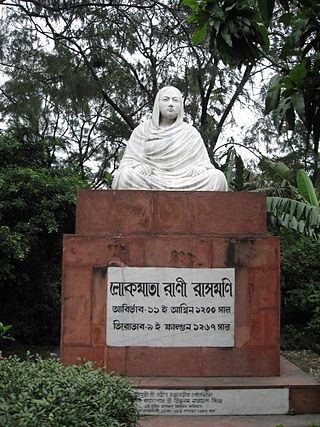
Mahishya, also spelled Mahisya, is a Bengali Hindu traditionally agrarian caste, and formed the largest caste in undivided Bengal. Mahishyas are considered as Forward caste.
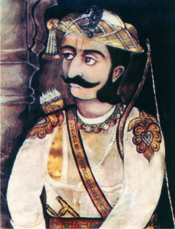
Raghoji I or Raghuji the Great of the Bhonsale dynasty, was a Maratha general who took control of the Nagpur Kingdom in east-central India during the reign of Shahu I. His successors ruled the kingdom until 1853.
Medinipur Sadar subdivision is an administrative subdivision of the Paschim Medinipur district in the state of West Bengal, India.
Mallabhum was the kingdom ruled by the Malla kings of Bishnupur, primarily in the present Bankura district in Indian state of West Bengal.
Gopa or Gop or Gope is a synonym of the Yadav (Ahir) caste. It is generally used as a title by the Ahir caste in the states of Bihar, Jharkhand and West Bengal of East India and even in Terai region of Nepal.
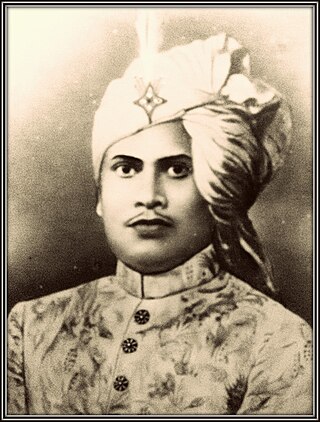
Narasingha Malla Deb, O.B.E. was a member of the Parliament of India and the 18th Raja of Jhargram, which he led from 1916 until the abolition of zamindaris by the West Bengal State Acquisition and Tenancy Act of 1950.
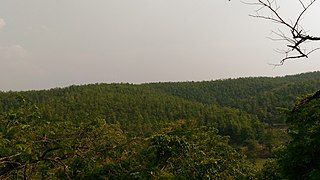
Jhargram is a district in the state of West Bengal, India.The district lies between the Kangsabati River in the north and the Subarnarekha in the south. Jhargram has one of the lowest population densities among the districts of West Bengal, with almost all its population living in rural areas. It is a popular tourist destination known for its sal forests, elephants, ancient temples and royal palaces. The district was formed on 4 April 2017, after bifurcation from the Paschim Medinipur district as the 22nd district of West Bengal. The district has its headquarters at Jhargram.

Jhargram Raj was a zamindari which occupied a position in Bengal region of British India. The zamindari came into being during the later part of the 16th century when Man Singh of Amer was the Dewan/Subahdar of Bengal (1594–1606). Their territory was centered around present-day Jhargram district. Jhargram was never an independent territory since the chiefs of the family held it basically as the zamindars of the British Raj in India after Lord Cornwallis's Permanent Settlement of 1793. Although its owners were both rich and powerful, with the chiefs of the family holding the title of Raja, the Jhargram estate was not defined as a Princely State with freedom to decide its future course of action at the time of Indian independence in 1947. Later, the Vice-Roy of India agreed to recognize Jhargram as "Princely State" after the Second World War, but the proposal taken back as the British had decided to give independence to India.
The Kingdom of Laur was one of the many petty kingdoms of the Sylhet region. Others included the Gour Kingdom, Ita Kingdom, Taraf Kingdom, Pratapgarh Kingdom and Jaintia Kingdom.
Karnagarh is a village and a gram panchayat in the Salboni CD block in the Medinipur Sadar subdivision of the Paschim Medinipur district in the state of West Bengal, India.
The Narajole Raj was a medieval royal dynasty and later a zamindari (estate) during the British period at Narajole in Paschim Medinipur district in the state of West Bengal. The Raja of Narajole was one of the largest landholders in Midnapore. The kings of Narajole belonged to the Sadgop(Yadav) community and had a close link with the rulers of Karnagarh.

The Midnapore Raj or Karnagarh Raj was medieval dynasty and later a zamindari estate of Sadgop during the British period in the Paschim Medinipur district in the state of West Bengal, India. The semi - independent Rajas of Karnagarh were amongst the most powerful rulers of Jungle Mahal region.

The Mallick Bari is an erstwhile Zamindari palace or rajbari located in the district of Paschim Medinipur, West Bengal, India. At present, the rajbari is one of Midnapore's most prominent heritage sites. Constructions commenced under Midnapore's then Zamindar Janmenjay Mallick, several hundred years ago.












